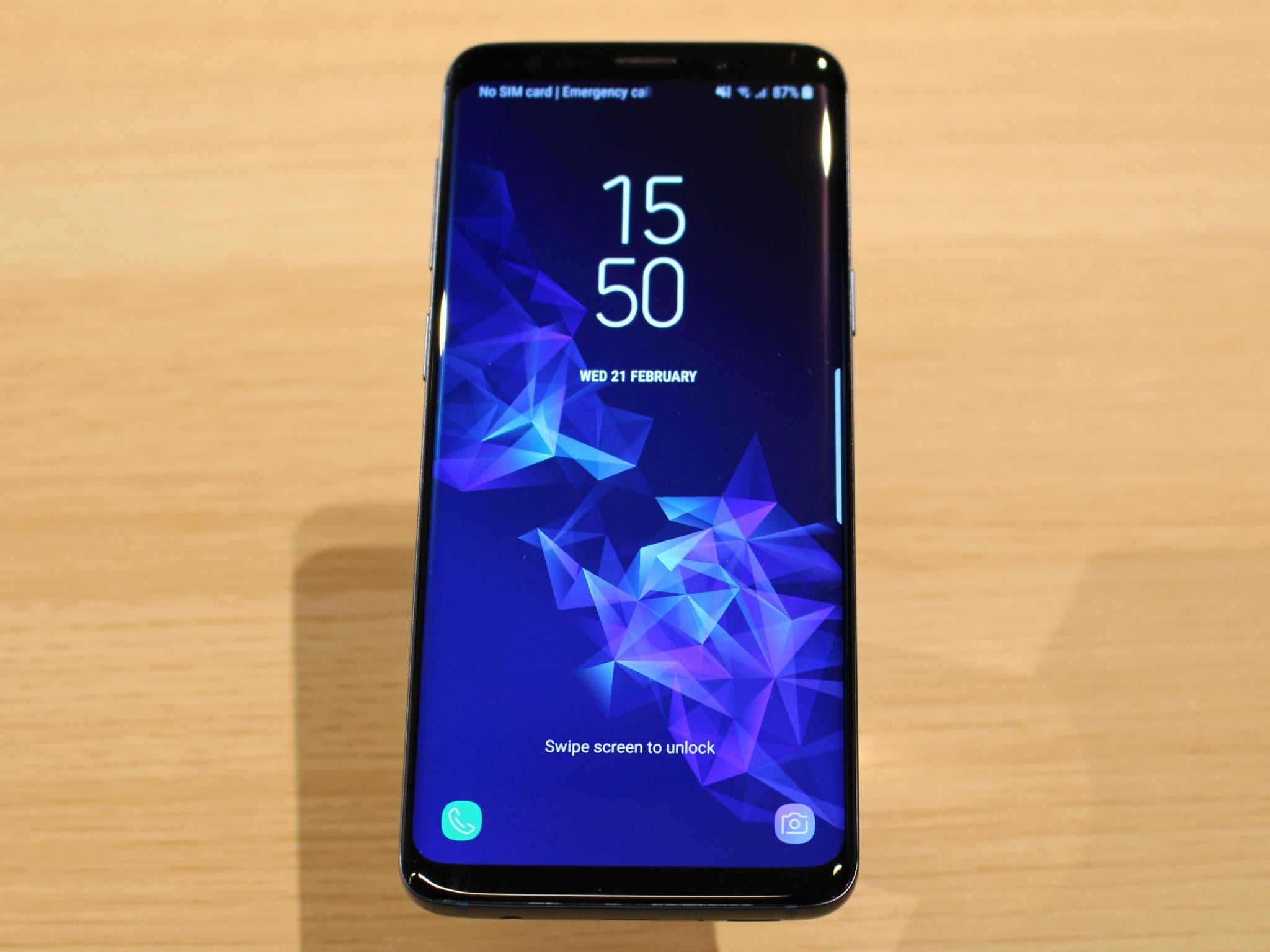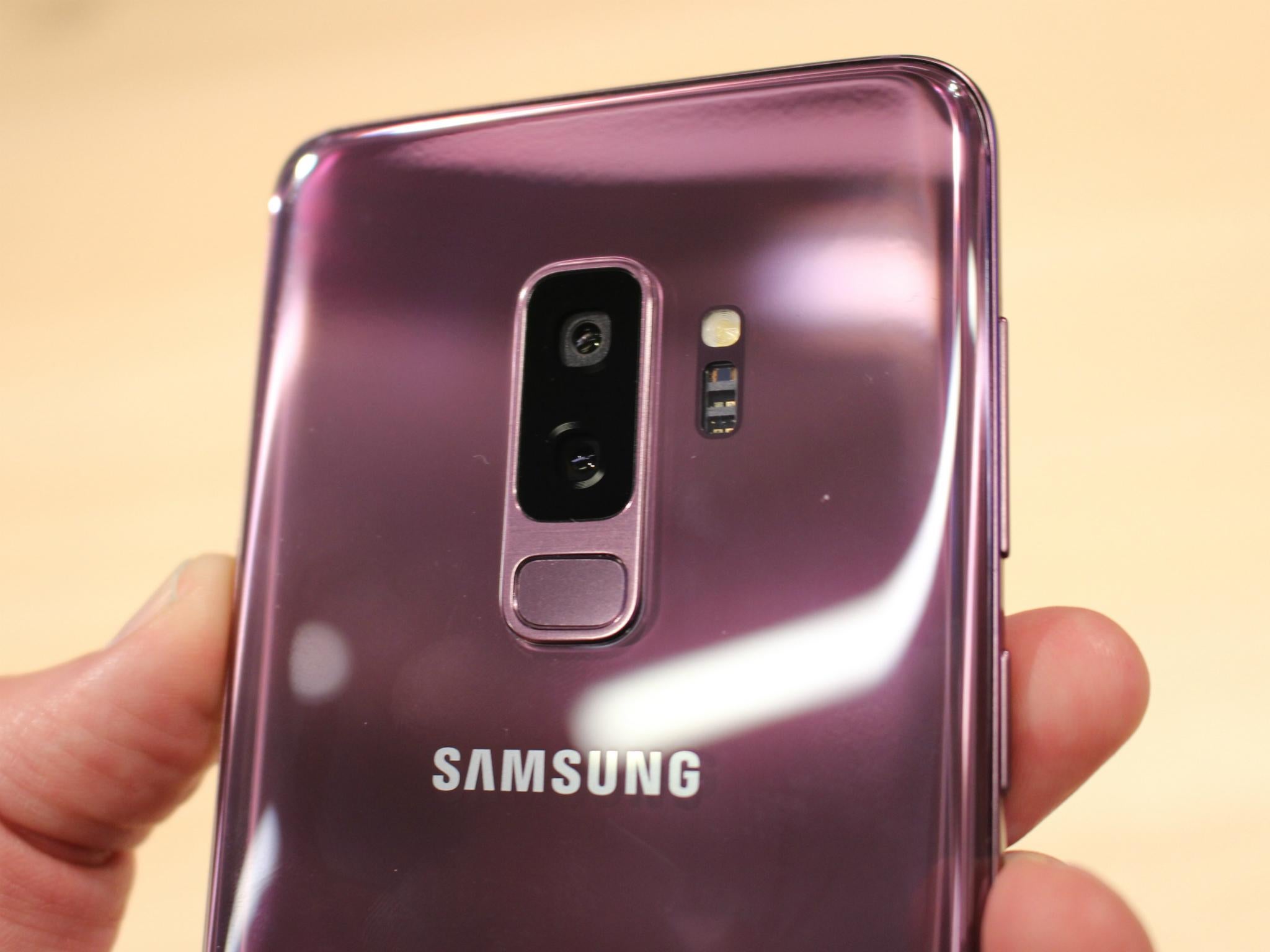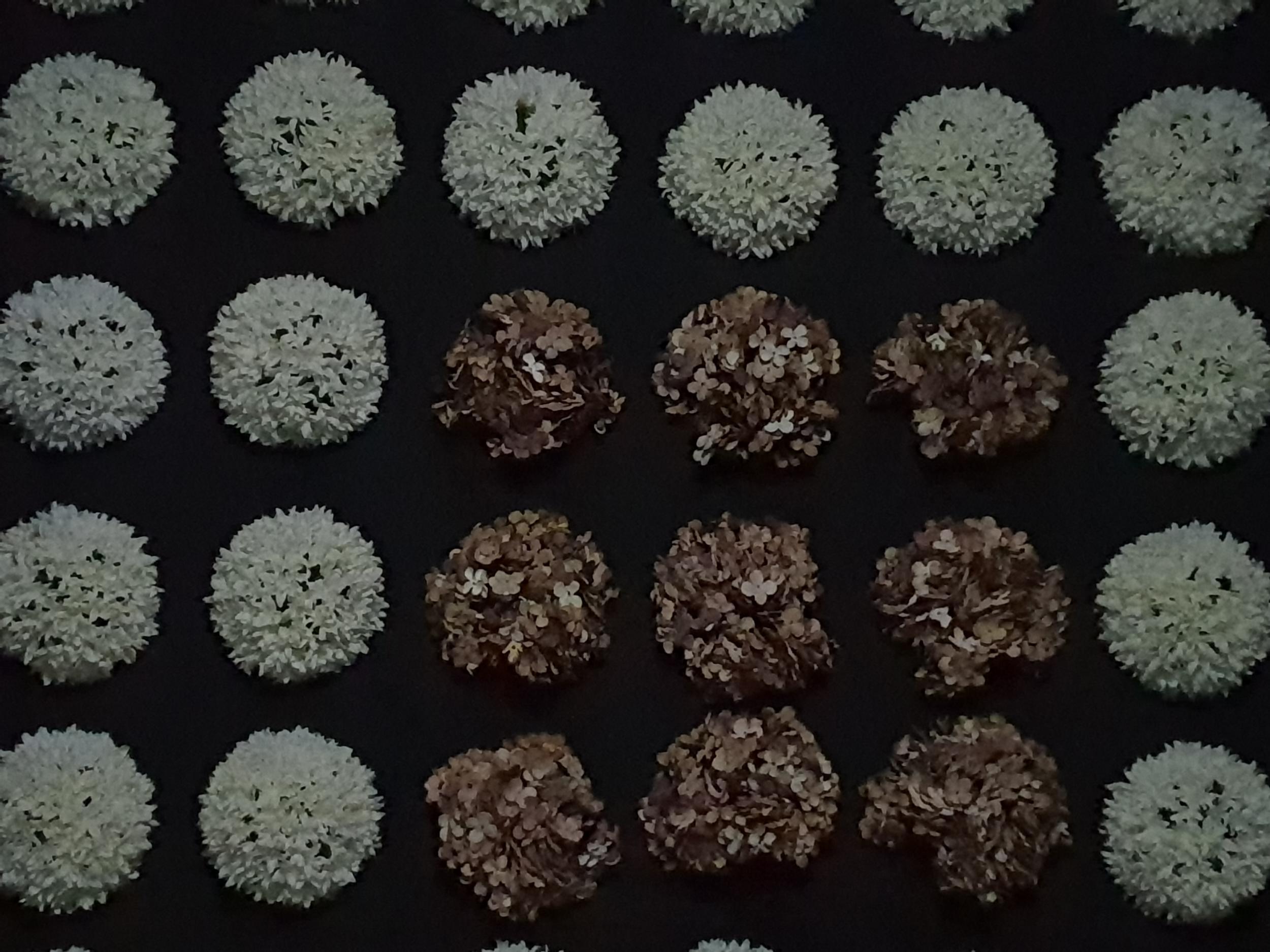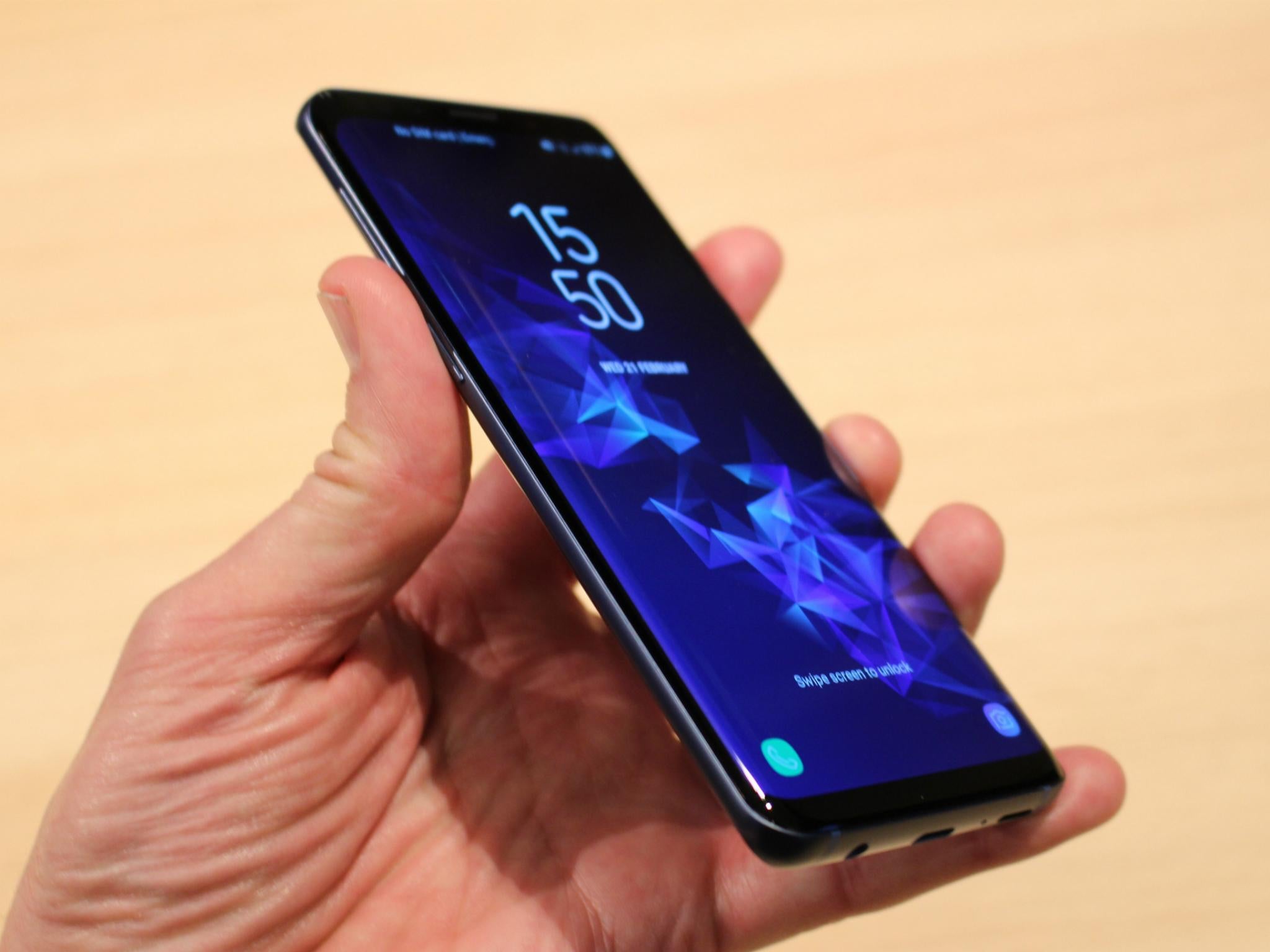Samsung Galaxy S9 hands-on review: A stunning phone with an impressive camera
The new handset looks very similar to last year’s model, but the more you explore it, the bigger the differences seem
Your support helps us to tell the story
From reproductive rights to climate change to Big Tech, The Independent is on the ground when the story is developing. Whether it's investigating the financials of Elon Musk's pro-Trump PAC or producing our latest documentary, 'The A Word', which shines a light on the American women fighting for reproductive rights, we know how important it is to parse out the facts from the messaging.
At such a critical moment in US history, we need reporters on the ground. Your donation allows us to keep sending journalists to speak to both sides of the story.
The Independent is trusted by Americans across the entire political spectrum. And unlike many other quality news outlets, we choose not to lock Americans out of our reporting and analysis with paywalls. We believe quality journalism should be available to everyone, paid for by those who can afford it.
Your support makes all the difference.Samsung has announced its latest flagship smartphone, the Galaxy S9.
It comes in two sizes, with the larger called the Galaxy S9+. So far, so unsurprising.
Actually, since there were so many leaks before the announcement, much of what was revealed was unsurprising.
Design
Last year’s S8 was well-received in almost every way, so it’s hardly a shock that this year’s model is more of the same. As before, the front of the phone is almost completely display, with slim bezels at top and bottom. In fact, this time around the bezels are fractionally smaller, so the screen-to-body ratio is even higher than last year’s impressive 83.6 per cent ratio.
The S9 is 1.2mm shorter than the S8, for instance, and 0.5mm thicker. In other words, it’s hard to spot the difference.
But there’s been one big design change: the fingerprint sensor on the back is no longer right alongside the camera lens, it’s been sensibly moved to beneath it, which is much better. In my brief time with the phone, I found it much easier to hit the sensor while looking at the front of the phone and without smudging the lens.
One of the things that Samsung is proud of with this new phone is the improved unlock system: you can now use facial recognition and iris recognition in tandem for a slick, fast, secure unlock.
The S9 and S9 + will be available in three colours in the UK: midnight black, coral blue and lilac purple. All look good, but telling the coral blue and midnight black apart indoors is quite difficult.
The lilac purple is particularly attractive, not least because there aren’t many other phones in this shade.
One more colour, a light silver finish, is also being made but if it comes to the UK it will likely be a special edition or network exclusive, I imagine.

Display
In the hand, the phone feels comfortable and solid, even if you plump for the larger S9+ with its 6.2-inch display. Like last year, this plus version feels much smaller than the declared specifications. The S9 has a 5.8-inch display, and both screens have an 18.5:9 screen proportion. This narrower ratio is one of the reasons it feels comfortable to hold.
For comparison, the iPhone X has a 5.8-inch display, the same size as the S9, though remember it squeaks out into the edges around the camera and sensor unit. The Apple phone is a little shorter, a little wider and a touch thinner than Samsung’s phone.
Samsung’s screens are higher-resolution, 570 pixels per inch on the S9 and 529 pixels per inch on the S9+. In truth, you really can’t see the difference as there’s a limit to how much the human eye can see in regular use, but the benefit of the extra pixels is evident when you’re using the phone right up close, like as a display in a virtual reality headset, for instance.
Both displays are bright and colourful, not to mention intensely detailed.

Camera
This is one of the big features on the new Samsung phones and, like the iPhone 8 and iPhone 8 Plus, there are differences between the two phones. Specifically, the S9+ is the first Galaxy S phone to have twin camera lenses on the phone’s rear (the Note 8 featured them last autumn, too).
The S9+ has two 12-megapixel sensors, a wide-angle and a telephoto. Switching from one to the other effectively gives a 2x optical zoom. As on the Note 8, you can also shoot both cameras simultaneously, to create a sumptuous bokeh depth-of-field effect.
The S9 has one lens, identical to the wide-angle one on the plus-sized phone. What’s clever about it is it has an adjustable aperture.
It naturally sits at an opening of f/2.4, which is fine, but if the light drops to below a certain brightness, roughly equivalent to an overcast day, the aperture automatically opens to f/1.5. This is exceptionally wide and highly useful in low light. I’ve only seen Samsung’s tests so far, but both yielded bright photos in situations where I could see almost nothing at all.

The benefit of this system is that you’re not limited to the super-wide-open aperture in bright light, which would reduce depth of field and therefore limit how much of the image is in sharp focus.
Samsung’s previous cameras have been excellent, and I have high hopes that this will do well. I’ll report back in due course.
Previously, Samsung introduced what it called Dual Pixels, a phase detection autofocus system which aims at delivering super-fast focusing. Now, the company is building on this by adding processing power which takes multiple frames in quick succession to create better-quality pictures.
It means that up to 12 frames can be shot, milliseconds apart, and combined to create the best result. In the case of low-light shots, this is done to reduce noise reduction and it means it can shoot in extremely low light situations.
There’s more to the S9 camera, including super slow-mo, shooting at 960 frames per second. Sony has already demonstrated this on its XZ Premium which launched last spring. Samsung has added a neat extra so that it’s the right bit of video that is slowed down – not easy when it only records at this speed for 0.2 seconds.
Before you shoot, choose a square area on the display where you want the slo-mo magic to happen and when the phone senses movement in the square, it records at 960fps automatically.
Emoji
Not to be outdone by Apple with its Animoji on the iPhone X, Samsung has come up with AR Emoji. You make a 2D image of yourself and the processor maps 100+ facial elements, creates a 3D image and knows how to add expressions.
Apple’s Animoji are intoxicatingly good fun, but maybe Samsung’s option will be fun, too.

Early verdict
Samsung’s new phones look, on the face of it, very similar to last year’s models. But the more you explore them, the bigger the differences seem.
I haven’t even touched on the stereo speakers tuned by AKG (part of audio company Harman Kardon, bought by Samsung recently) with Dolby Atmos for a 360-degree sound effect. Or the improvements made to Bixby, the addition of the SmartThings app to control smart home accessories and background music and special frames to complement the super slow-mo footage.
Not to mention the continued presence of waterproofing, curved-edge displays and, oh yes, a headphone jack.
I’ll be taking a look in more detail when I review the phones. Which shouldn’t be long: pre-orders began as the phone was revealed and start arriving in customers’ hands on 9 March.
The S9 costs £739, which is not cheap, but the S9+ costs a whopping £869. As last year, there will be trade-in deals available.

Join our commenting forum
Join thought-provoking conversations, follow other Independent readers and see their replies
Comments